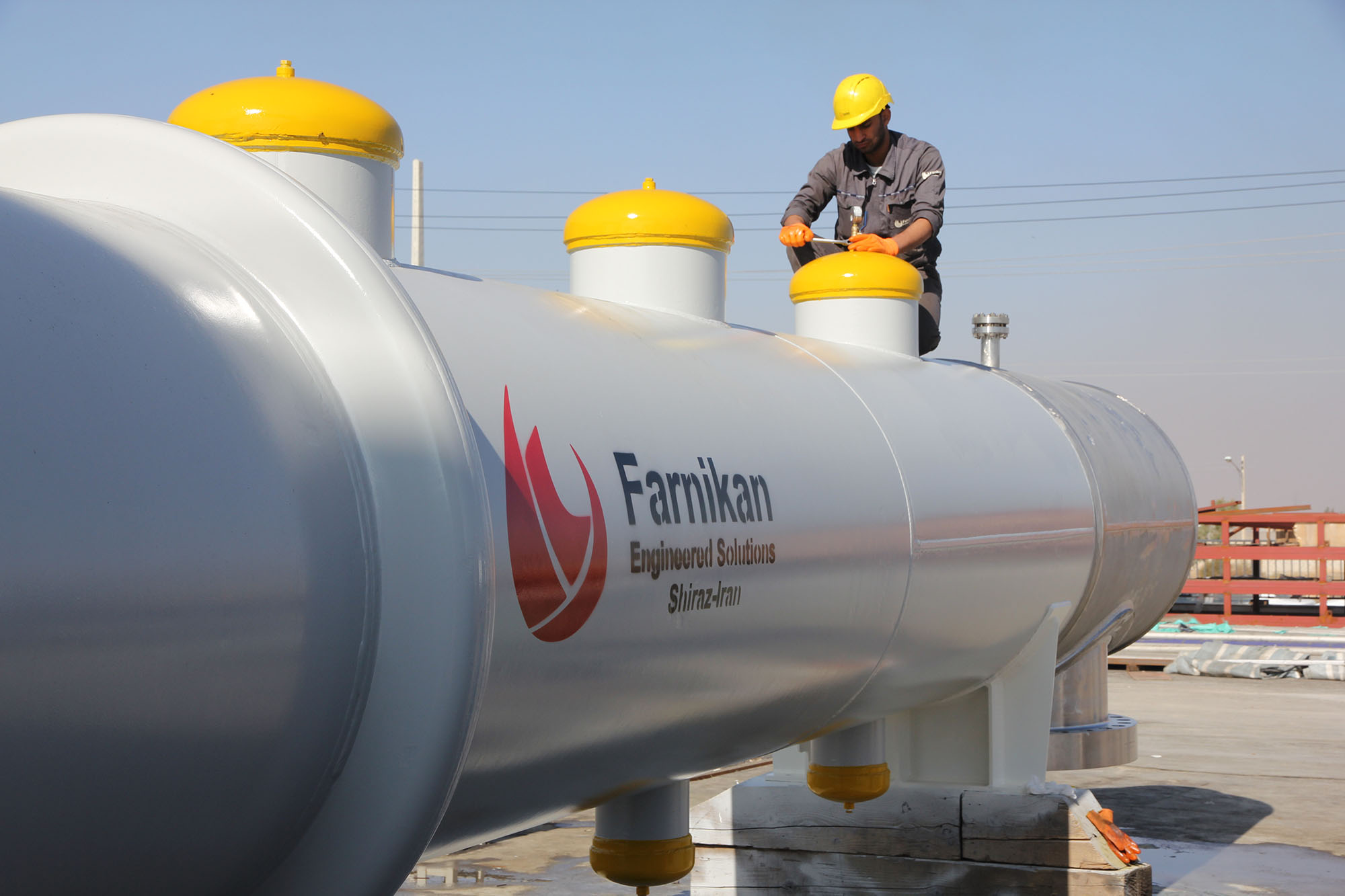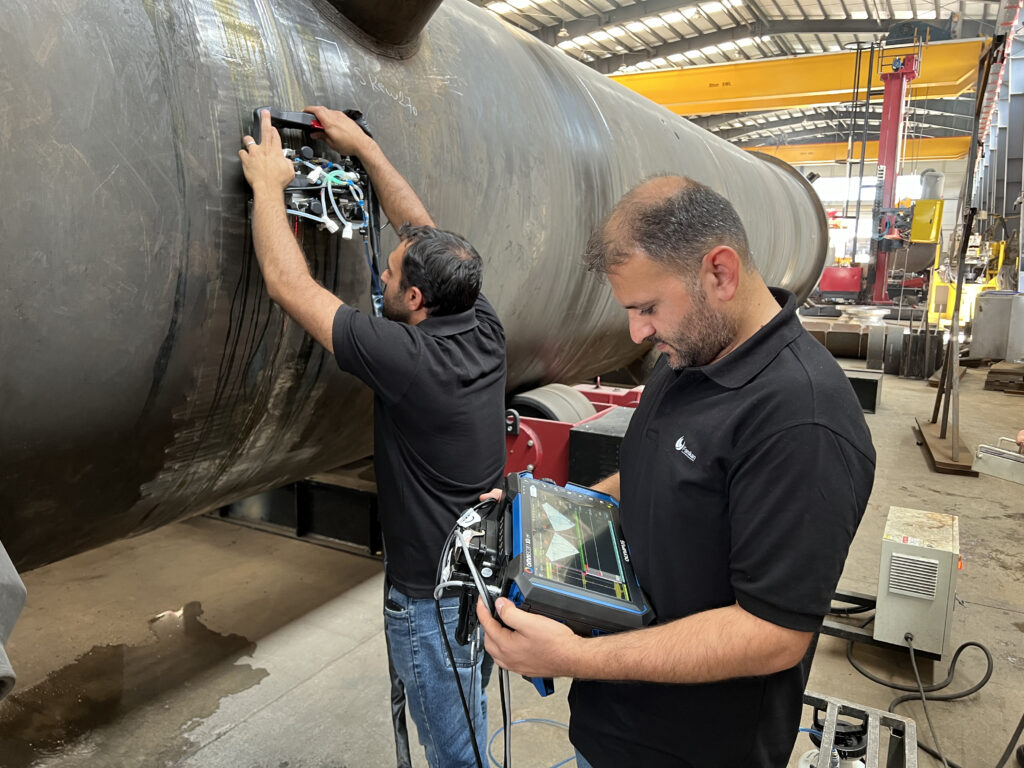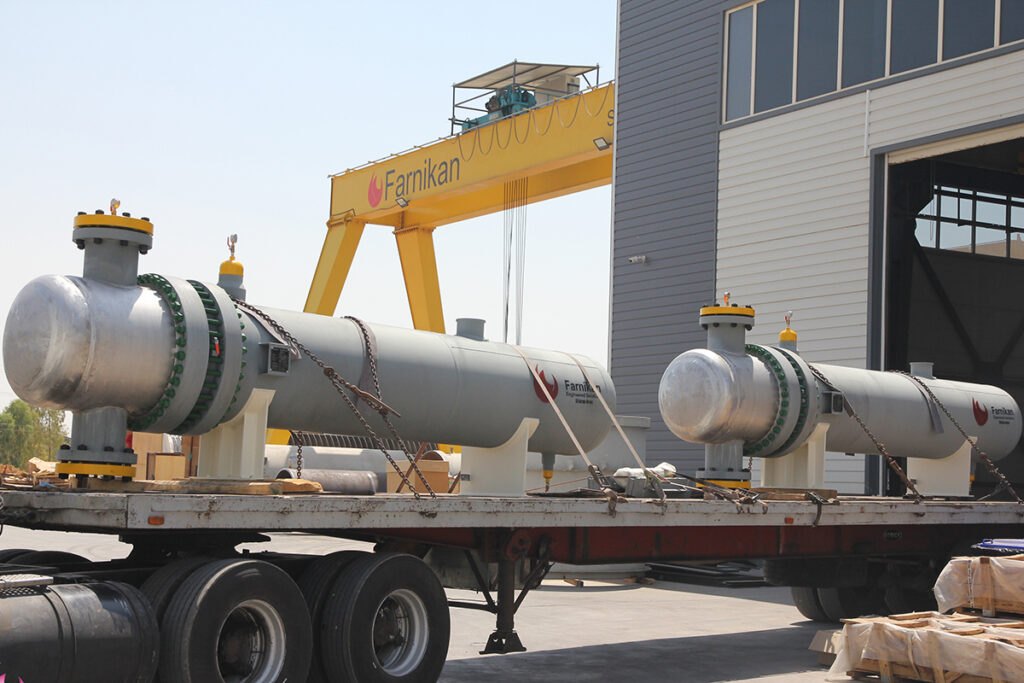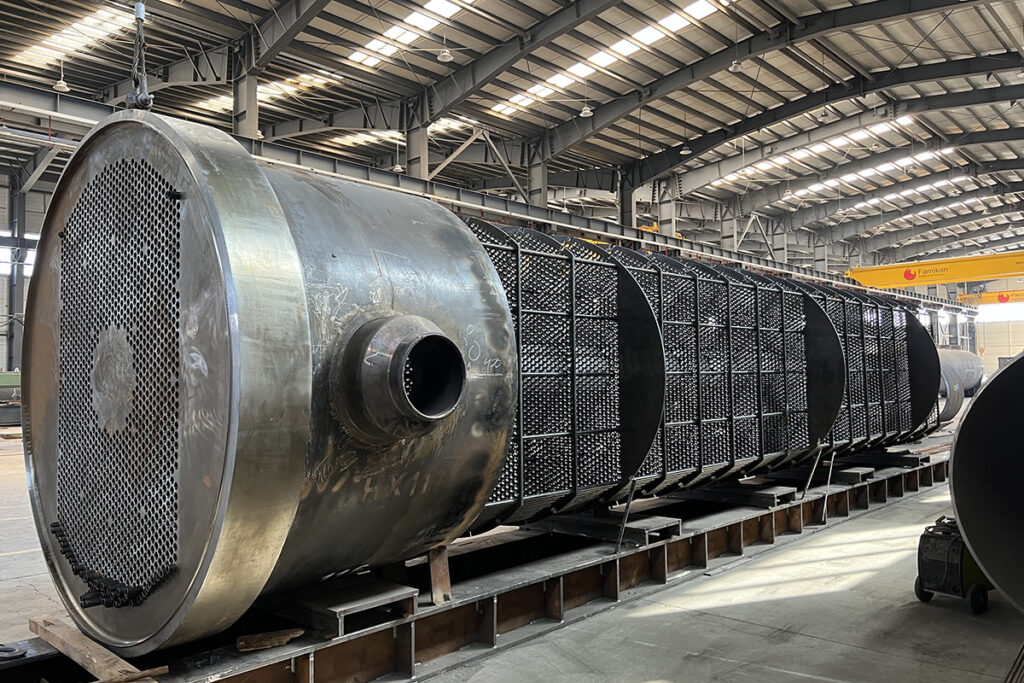Types of Heat Exchangers
Following are the types of heat exchangers used for almost all purposes:
- Shell and tube heat exchanger
- Tube in tube heat exchanger
- Double pipe heat exchanger
- Direct and indirect heat exchanger
- Plate heat exchanger
- Pillow plate heat exchanger
- Finned heat exchanger
- Adiabatic heat exchanger
- Phase change heat exchanger
- Microchannel heat exchanger
- Waste heat recovery unit type
- Condenser, boiler, and evaporator
#1 Shell and Tube Heat Exchanger
These are the most common and versatile types of heat exchangers. This heat exchanger is developed with multiple tubes in which the two working fluids exchange heat by thermal contact which is placed within a cylindrical shell. As such, one fluid flows inside the tubes and the other through the shell.
While flowing they exchange heat which means the cold liquid receives heat from the hot liquid. Shell and tube heat exchangers are compact in design, easy to maintain, and give excellent heat exchange. This heat exchanger is used for preheating, oil cooling, and steam generation.
#2 Tube In Tube Heat Exchanger
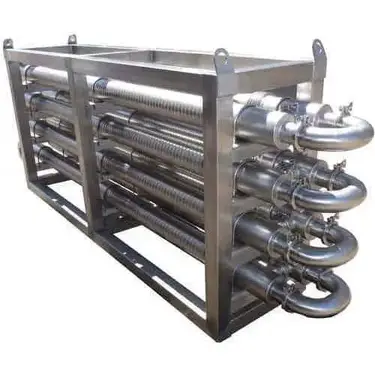
Tube-in-tube heat exchanger specially designed for sludge containing fibers and particles, used for heating and cooling purposes. Tube in tube heat exchangers is introduced with a tube mounted inside an outer shell tube.
During operation, the product medium inside the tube floats into the service medium in counter current. The product tube is folded, or it may be smooth. This unique design prevents thermal fatigue, increases efficiency, and reduces overall size. They are perfect for high-temperature, high-pressure, and low-flow applications.
#3 Double Pipe Heat Exchanger

These types of heat exchangers are perfect for the transfer or exchange of heat between two liquids without mixing them. Double pipe heat exchangers consist of two or more concentric, cylindrical pipes or tubes (one larger and the other smaller).
In this, one liquid flows through a smaller pipe, and another liquid flows between the two pipes, and so on. The inner pipe acts as a conductive barrier. It can provide good efficiency with low capital cost and is used in many industrial processes, cooling technology, refrigeration equipment, and other fields.
#4 Direct and Indirect Heat Exchanger

Direct heat exchangers implement heat transfer between two phases of hot and cold currents in the absence of an isolating wall. In these types of heat exchangers, heat exchange is replaced by the direct mixing of hot and cold liquids and the transfer of heat placed simultaneously. Examples include cooling towers and jet condensers.
Indirect heat exchangers are used to measure the change in temperature of one fluid by using another fluid in which the two liquids are separated by an impermeable surface such that the two liquids do not mix. These heat exchangers keep the fluid exchanged heat separated by using tubes or plates etc.
#5 Plate Heat Exchager

As the name suggests, these types of heat exchangers consist of metal plates. These metal plates form channels through which the interacting fluids can flow. Plate heat exchangers use multiple layers of flat plates fixed to form a series of channels for the flow of fluids.
In this, the heat cuts through the surface, separating the hot medium from the cold one. Thus, heating and cooling liquids and gases use minimal energy levels. They are often more compact and sometimes less costly than shells and tubes. These types of commonly used in water heaters and free cooling.
#6 Pillow Plate Heat Exchanger
These are used for both industrial cooling and heating purposes of products. These types of heat exchangers are fully welded, so they form a wavy, “pillow-shaped” surface by an inflation process. These types are commonly found in reboilers, water chillers, solids drying, etc.
A perfect example of this heat exchanger is commonly seen in the dairy industry for cooling milk in large stainless steel bulk tanks. The tank surface area can be combined with this heat exchanger, without gaps that would occur between pipes welded to the exterior of the tank.
#7 Finned Tube Heat Exchanger

Finned tube heat exchangers are designed to refer to the maximum heat transfer surface area with the exchanged heat, which improves the efficiency of conducting heat in liquids with low thermal conductivity, such as air.
It consists of a series of tubes with fins added to increase the contact area with the external fluid to exchange heat, and between the fluid inside the tube and the fluid outside the tube. These fins are made of either aluminum or copper, which are usually thin. These types of heat exchangers are seen in air conditioners and car radiators.
#8 Adiabatic Wheel heat Exchanger

This type of heat exchanger is widely used for industrial purposes. It consists of a rotating wheel and an intermediate fluid that is stored to hold heat. It is then transferred to the other side of the heat exchanger for release.
Threads are provided on the wheel’s circumference to increase the surface area. During operation, it circulates through two sections containing fluid where heat is transferred. These are essential where heat needs to be effectively transferred between gases which is not easily possible in other types.
#9 Phase Change Heat Exchanger

The term “phase” may refer to heat exchangers with the material within their structure in which a change of phase occurs. This heat exchanger utilizes the natural phase-change properties of an environmentally friendly cooling fluid to collect, transfer, and dissipate heat safely and continuously.
It is usually a solid-to-liquid phase due to the small volume difference between these states. This change of phase work like a buffer as it occurs at a constant temperature but still allows additional heat to be obtained. The main advantage of phase change materials is they have the ability to store large amounts of energy.
#10 Micro Channel Heat Exchanger

These are types of multi-pass parallel-flow heat exchangers consisting of manifolds (inlet and outlet), multi-port tubes with hydraulic channels (less than 1 mm), and fins. All these parts are usually brazed together using a controlled atmosphere brazing process.
In this type, at least one fluid (refrigerant or water) flows through tubes or enclosed channels while air flows cross-currently through connected fins. They are known for their high heat transfer ratio, compact size, and low airside pressure. Applications in which it is used include the automotive industry as car radiators.
#11 Waste Heat Recovery Unit

A waste heat recovery unit is also a type of heat exchanger used to transfer heat from the output of the process at high temperatures to another part of the process. A simple example involves domestic drainage heat recovery.
In this method, the heat going down a sink or shower drain is recovered by coiling a copper pipe around the drain pipe. The coil is then used to heat the water as it passes through the pipe on its way to the water heater. These enable companies to reduce waste and increase their efficiency.
#12 Condenser, Boiler, and Evaporator
Many people don’t know this, but condensers, boilers, and evaporators are also types of heat exchangers. These heat exchangers employ a two-stage heat transfer mechanism.
Condensers are heat exchange devices that take hot gas and cool it to the point of condensation, turning the gas or vapor into a liquid. In evaporators and boilers, the heat transfer process is carried out by changing the liquid form from the liquid form to the gas or vapor form.
